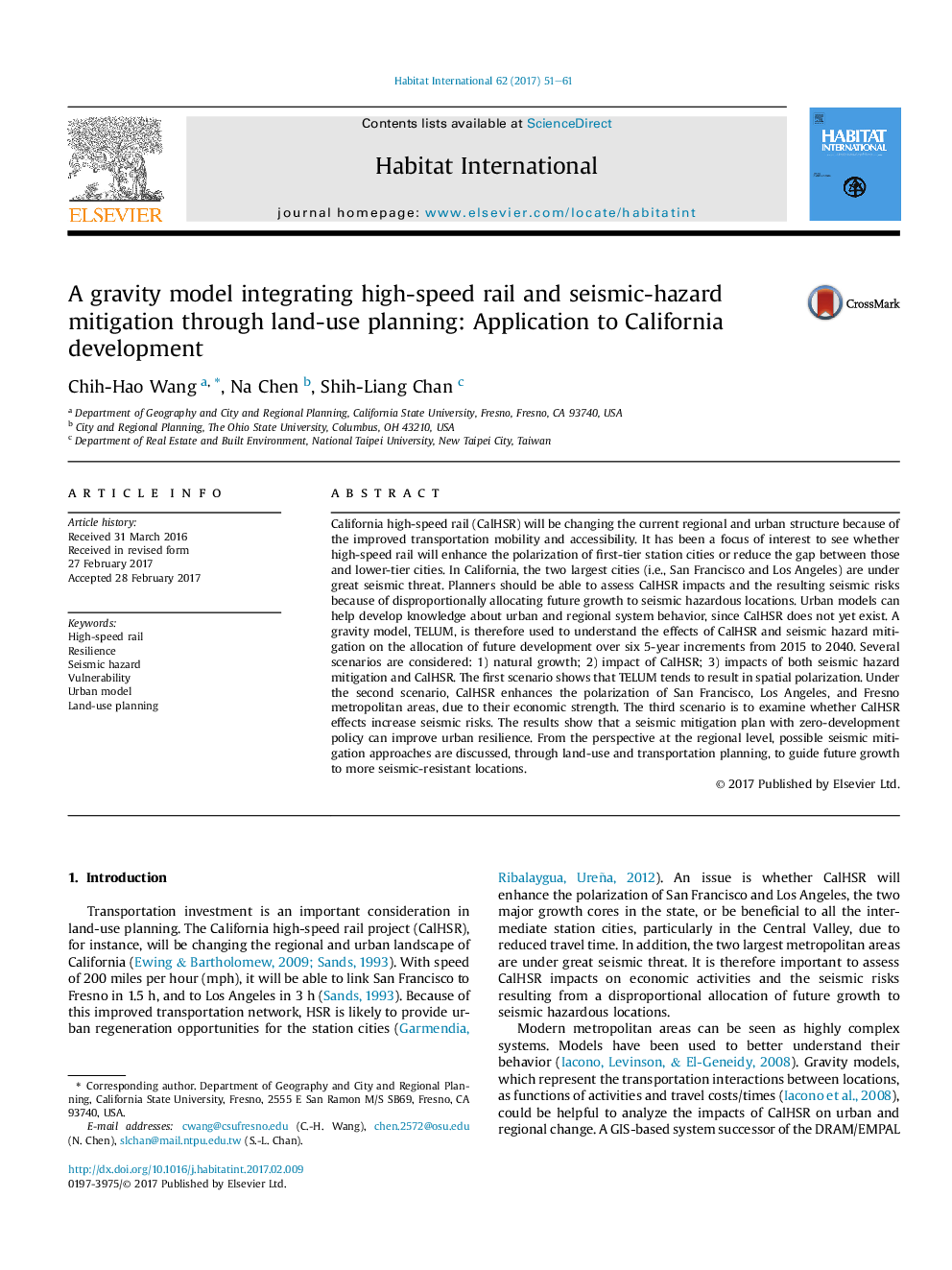| Article ID | Journal | Published Year | Pages | File Type |
|---|---|---|---|---|
| 5114669 | Habitat International | 2017 | 11 Pages |
Abstract
California high-speed rail (CalHSR) will be changing the current regional and urban structure because of the improved transportation mobility and accessibility. It has been a focus of interest to see whether high-speed rail will enhance the polarization of first-tier station cities or reduce the gap between those and lower-tier cities. In California, the two largest cities (i.e., San Francisco and Los Angeles) are under great seismic threat. Planners should be able to assess CalHSR impacts and the resulting seismic risks because of disproportionally allocating future growth to seismic hazardous locations. Urban models can help develop knowledge about urban and regional system behavior, since CalHSR does not yet exist. A gravity model, TELUM, is therefore used to understand the effects of CalHSR and seismic hazard mitigation on the allocation of future development over six 5-year increments from 2015 to 2040. Several scenarios are considered: 1) natural growth; 2) impact of CalHSR; 3) impacts of both seismic hazard mitigation and CalHSR. The first scenario shows that TELUM tends to result in spatial polarization. Under the second scenario, CalHSR enhances the polarization of San Francisco, Los Angeles, and Fresno metropolitan areas, due to their economic strength. The third scenario is to examine whether CalHSR effects increase seismic risks. The results show that a seismic mitigation plan with zero-development policy can improve urban resilience. From the perspective at the regional level, possible seismic mitigation approaches are discussed, through land-use and transportation planning, to guide future growth to more seismic-resistant locations.
Related Topics
Social Sciences and Humanities
Social Sciences
Development
Authors
Chih-Hao Wang, Na Chen, Shih-Liang Chan,
